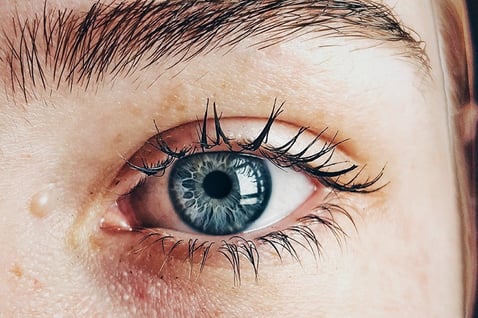Brand Architecture
Organizing Your Brand Portfolio to Maximize Growth.jpg?width=570&height=650&name=brand-positioning-(1).jpg)
Overview:
What is Brand Architecture?
As a brand strategy consultancy, we believe “fewer, stronger brands” is the best philosophy when it comes to managing a portfolio, given the expense and effort required to build and maintain brands. So companies are wise to design a framework—an architecture—for developing and organizing brands in their portfolio. It keeps the portfolio clear and focused and helps ensure that each brand within it is seen as distinct and, ultimately, indispensable.
Optimizing brand portfolios entails designing a comprehensive, forward-looking approach for establishing the right mix and organization of brands. Specifically, it requires developing two key strategies:
Brand Portfolio Strategy
This addresses which markets to participate in, which customer segments to target, how to align brands with target segments, the number of brands needed to sufficiently (and efficiently) serve specific markets and the strategic role for each brand.
Brand Architecture Strategy
This addresses which types of brands to have across offerings (master, descriptive, sub-, endorsed, etc.), how much emphasis to give brands relative to one another, and what type of relationships brands within a portfolio should have—especially relative to the corporate (master) brand.

Our Process
Questions
Addressed
- What is the optimal number of brands for the portfolio?
- What is the strategic role for each brand within the portfolio?
- What relationship, if any, should brands within the portfolio have with one another?
Typical
Challenges
- The brand portfolio has become bloated (too many brands) and confuses customers
- Brands within the portfolio are sub-optimally or illogically aligned with product offerings
- Relationships between brands are random, or worse, detrimental to the portfolio
Ensuring
Success
- Efficiency: The brand portfolio maximizes coverage, while minimizing overlap or duplication
- Clarity: The brand architecture is easy for customers to understand and navigate
- Alignment: Brands within the portfolio clearly map to target segments and product categories
Get to Know More
Understand the Unique Nuances of Brand Portfolio Strategy and Architecture
Craft a Comprehensive Brand Portfolio Strategy
Brand Architecture Case Studies
Let’s get in touch!
Brand Architecture FAQs
The primary brand architecture frameworks include:
House of Brands: This model features a parent company managing a collection of distinct and independently marketed brands, each targeting unique customer segments and maintaining its own individual identity. There is minimal to no overt association with the parent company, giving each brand the flexibility to establish its own positioning and reputation in the market (e.g., Unilever's Dove, Axe, and Lipton, and P&G’s Tide, Pantene, and Oral-B).
Branded House: Here, the parent brand is the central identity that unifies all sub-brands under one umbrella. Each sub-brand leverages the master brand's strong reputation and core values. They typically share elements of the parent brand's visual identity, messaging, and marketing efforts, providing a cohesive and unified brand experience. For example, Google encompasses various services like Google Maps, Google Calendar, and Google Mail. All these services carry the master brand's identity, drawing on Google's recognition and reputation for innovation and reliability.
Hybrid: A combination of the above two frameworks (Branded House and House of Brands), this model allows businesses to adapt to various customer segments and market dynamics. It creates a flexible architecture that accommodates diverse portfolios. One popular example of a Hybrid brand architecture is Marriott International, containing both Marriott sub-branded hotels and standalone brands like Ritz-Carlton. Hybrid is arguably the most common architecture structure, as few portfolios are a “pure” House of Brands or Branded House.
The key components of brand architecture include:
Organizing principles: The dimensions upon which the portfolio is defined and the Market Map is established (product categories, customer segments, usage occasions, price/value tiers, etc.). Most Market Maps employ two distinct organizing principles, forming an “x” and “y” axis upon which to plot portfolio brands.
Brand hierarchy: This outlines the structure of the brand portfolio, detailing the relationship between the parent company and the product lines and service offerings within it. It helps to organize and categorize the different elements within a brand portfolio, clarifying how each fits within the overall brand architecture. Examples of hierarchy include corporate brands, BU brands, solution brands, product brands, etc.
Brand roles: Identifies the specific strategic roles that each brand within the portfolio serves. These roles can include category leaders or flagship brands, flanker brands, endorser brands, or fighter brands, each serving specific strategic purposes such as targeting different market segments or defending against competitors.
Brand relationships: This component focuses on the degree of connectivity and visibility between the parent brand and its sub-brands or extensions. It includes the decision on whether to employ a branded house strategy (where the corporate brand dominates), a house of brands strategy (where the connection to the corporate brand is minimal), or a hybrid approach. Examples of relationships include descriptive brand, sub-brand, ingredient brand, co-brand, etc.
Visual identity: This is the external manifestation of brand architecture. It establishes a consistent visual expression across the portfolio in alignment with the brand architecture strategy. In particular, it informs whether and how any two brands within a portfolio are linked (i.e., logo locks), including which brand is in a driver role, endorser role, etc.
Naming convention: Another external manifestation of brand architecture, a strategic naming convention helps ensure a consistent approach for naming offerings within the portfolio. This sometimes includes a systematic method of naming that reinforces brand hierarchy and relationships (e.g., alpha-numeric), helping customers navigate the portfolio’s offerings more easily.
FullSurge approaches brand architecture with a strategic focus on aligning a company's brand portfolio with its overall business objectives and strategy. Our methodology involves a detailed analysis of the existing brand structure, identifying areas where clarity, coherence and leverage can be improved.
We work to establish clear organizing principles, hierarchies, and relationships for the portfolio, which helps minimize market confusion and enhance individual brand equity. We ensure each sub-brand or product line is positioned effectively to target appropriate market segments while maintaining alignment with the core values and identity of the parent brand.
This approach not only streamlines internal branding efforts but also optimizes customer interactions across various touchpoints, making the brand architecture a strategic asset for the company's growth and market presence.







